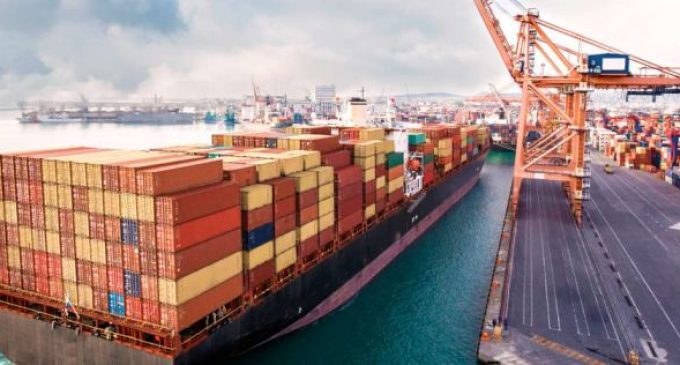From Globalization, to Localization, to Diversification: How the Pandemic is Reshaping Supply Chains

How operational and technological investment can provide solutions to the challenges faced by the logistics industry as manufacturers localize and diversify their operations.
The global supply chain has always been a complex and delicate ecosystem, but recent events have further highlighted its fragility. The COVID-19 pandemic disrupted supply chains around the world, causing widespread shortages and delays, and the hangover from these impacts is still being felt today.
The manufacturing industry was hit exceptionally hard, with businesses struggling to source the raw materials and components needed to produce their goods. As we look towards the future, it is clear that the current supply chain struggles will have long-term implications for the manufacturing industry.
The shifting of global supply chains has presented significant challenges to logistics providers, including transportation companies, freight forwarders, and customs brokers. While some providers were already equipped to handle this shift, others had to adapt quickly to meet the needs of their customers.
The long-term implications of supply chain struggles
The pandemic has exposed the vulnerabilities of relying on a single source or location for manufacturing and production. Many manufacturers believed that re-shoring production to local markets would be a possible solution. By doing so, companies would reduce the risks associated with disruptions in transportation and trade, improve the quality of their products, and reduce the costs associated with shipping and tariffs. However, re-shoring production has proven to be a complex and challenging process for many companies.
One of the main challenges of re-shoring is the high costs associated with production in some regions. For example, labor costs in developed regions, such as North America and Europe, are significantly higher than in developing regions like Asia, making it difficult for companies to compete on price. Additionally, the lack of infrastructure and skilled labor in some regions makes it difficult to establish new production facilities. Companies must weigh the benefits of re-shoring against the costs and challenges associated with doing so.
Consequently, many businesses have opted to diversify their supply chains, sourcing goods from multiple regions, such as Vietnam, Indonesia, and Malaysia, rather than relying on a single source, typically China. This strategy has proven to be more effective in mitigating the risks associated with supply chain disruptions. By sourcing goods from multiple regions, companies can reduce their dependence on a single source or location and make their supply chains more resilient and adaptable to changes in supply and demand.
Manufacturers must also ensure they have the logistics in place to transport materials from multiple locations. This can be a challenging and time-consuming process, but it is essential for ensuring the resilience of the supply chain.
Can logistics providers handle the pressure?
As a result, logistics providers are having to ramp up their operations quickly to meet this demand, which can be a significant challenge. This is all happening at a time where the industry is facing its own set of challenges, including a shortage of drivers and capacity constraints.
The former has been attributed to a combination of factors, including an aging workforce, low wages, and the high cost of training new drivers. Additionally, capacity constraints are a consequence of the limited infrastructure and equipment needed to transport goods.
As manufacturers shift their production to new countries, logistics providers must adapt to the specific requirements of each new market. Different countries have different regulations and customs procedures, and logistics providers must be able to navigate these differences efficiently to provide a seamless service to their customers. For example, some countries may have restrictions on certain types of goods, or require additional documentation for customs clearance.
Infrastructure can also be a significant hurdle. Many of the countries where manufacturers are moving their operations to may not have the same level of infrastructure as China. This can impact logistics providers in several ways, for example, longer transit times, higher transportation costs, and a lack of warehousing facilities. Additionally, some countries may lack the necessary road, rail, and port infrastructure to support efficient logistics operations, which can lead to delays and disruptions.
How can they adapt?
As manufacturers diversify away from China, logistics providers have been forced to respond, and are expanding their own operations throughout the Asia-Pacific region. This has involved investing in new facilities, hiring local staff, and building relationships with local partners and suppliers.
To address these challenges, logistics providers are investing heavily in new technologies and infrastructure to improve their operations.
Many are implementing new digital tools and platforms to improve supply chain visibility, and enhance their ability to track and manage shipments in real-time. Additionally, some logistics providers are investing in new warehouses, transportation networks, and other infrastructure to support their operations in new markets.
These companies must develop new supply chain strategies to accommodate the changing needs of their customers. For example, they may have to find new shipping routes or modes of transportation to reach new manufacturing centers. They may also need to adjust their warehousing and distribution networks to accommodate the different types of products being manufactured and shipped.
Another key strategy is to provide more value-added services to their customers. This includes services such as customs brokerage, freight forwarding, and supply chain consulting. These services help customers navigate the complexities of doing business in new markets and ensure that their products are delivered on time and in good condition.
Logistics companies have also invested in technology to manage their operations more efficiently. This includes the use of advanced analytics and machine learning algorithms to optimize shipping routes, track inventory, and predict demand. Additionally, new technologies like blockchain can improve supply chain transparency and reduce the risk of fraud and counterfeiting.
Investment in supply chain management (SCM) software is another common strategy being adopted by logistics companies. SCM provides end-to-end visibility and control of supply chain processes, from procurement and inventory management through to transportation, and delivery. With SCM software, logistics companies can optimize their operations, reduce costs, and improve customer service by streamlining processes, enhancing collaboration, and increasing efficiency.
Logistics and supply chain management play a critical role in the success of businesses. While re-shoring production may not be the solution for all companies, supply chain diversification will mitigate the risks associated with disruptions. Additionally, investing in new technologies can improve visibility and automation in the supply chain, enabling companies to better manage their operations. By adopting a strategic approach to supply chain management and logistics, businesses can build more resilient and agile supply chains that can weather future disruptions.
Taking advantage of the latest market intelligence
The companies best placed to deal with the challenges and maximize the opportunities in these markets are those who are well prepared and take advantage of tactical industry intelligence, updated in real time by industry experts, that provides the latest information from across the globe.
As well as identifying the different categories of products and grasping the different business strategies, they must also engage with the main areas of change, growth, and risks in the industry.
In addition, people who are responsible for employees’ professional development should make use of training services that lead to industry certifications and proof of expertise in the industry.
High-performing companies recognize their executives, sales and marketing, and service staff can be more effective when armed with up-to-date information about the challenges their clients face. Cambashi Industry Fundamentals Insights provides tactical industry intelligence from across the globe, updated in real-time by industry experts, including:
- latest trends and challenges, business drivers, products and services, and technology
- business strategies and initiatives
- key players and consumer perspectives
- industry terminology and metrics
- deeper knowledge across a variety of industry subjects.
For more information visit https://cambashi.com/our-services/industry-training/




























